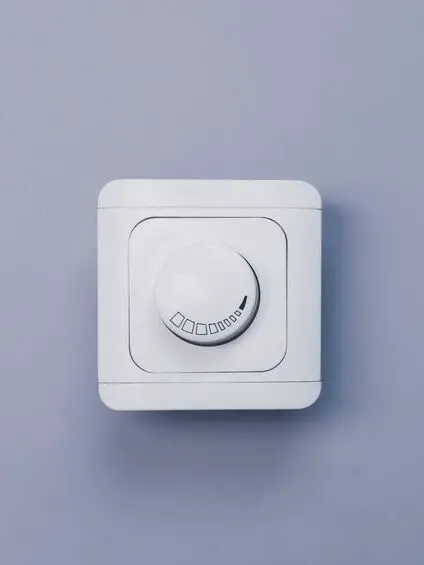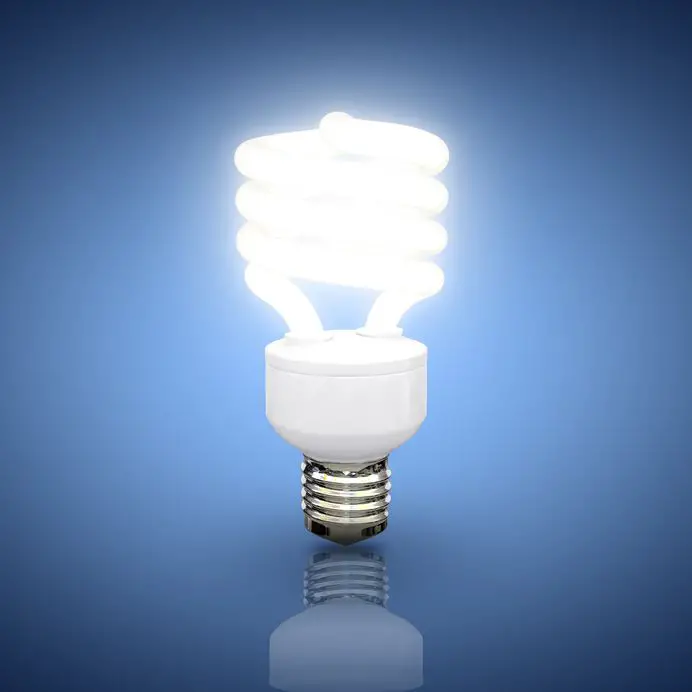How To Tell If Your Lights Are Warm Or Cool
If you’re changing your lights, you may want to know what the colour temperature of it is to ensure you get an equal replacement. This article is here to help you identify if your lights are warm or cool and why that matters in the first place.
Contents
Identifying The Colour Temperature Of Lights
The easiest way to figure out if a light is warm or cool is to find its CCT (K) value and analyse it. If it’s between 2000-3500K it is considered a warm white light and if it’s 3500-6000K it is considered a cool white light.
With this established, we can begin to look at how we can find this number on any given light source. Here are 5 ways you can use to determine the colour temperature of your bulb.
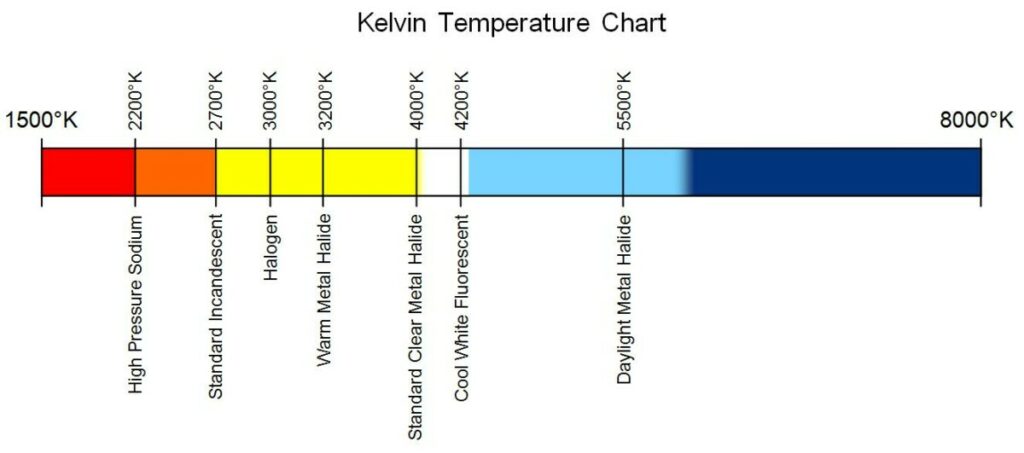
Read The CCT (K) Value On The Bulb
The most obvious place to start is to simply read the value straight of the bulb in question.
You will likely find a lot of information on the bulb. This information should include things such as voltage level, Watts, manufacturing location and so on.

While this information is great to know it doesn’t give us the answer we are searching for. In this specific case, it is because the bulb is an incandescent bulb, which by default has a colour temperature of 2700K.
But for bulbs like fluorescent bulbs and LED bulbs, this number will almost always be listed. There are 2 different ways this number can be listed on the bulbs.
- It will simply say the full value of the colour temperature, for example, 2700K or 4000K.
- It will have a 3-digit number code on it somewhere. This code will look something like “927” or “840”.
This 3-digit code tells you 2 things about the light bulb. It tells you its CRI value as well as its colour temperature.
For example, let’s look at it if the number says “840”. The first digit represents the CRI of the bulb. In this case, it means that the CRI value is somewhere between 80-89 due to the first digit of the code being an 8.
The last two numbers of the 3-digit code on the bulb will tell you the colour temperature. If the bulb says “840” it means that the colour temperature is 4000K and if it were to say “927” it would be 2700K.
Read The CCT (K) Value On The Bulb’s Packaging
Another rather simple way of finding the colour temperature of a bulb is to look at the packaging it came in. In almost every single case this number will be stated somewhere on the packaging.
If it isn’t written out as a large number somewhere you should check towards the back of the packaging in its technical data sheet. Somewhere along it, you should be able to find a row which states its colour temperature.
Download Colour Temperature Reading App On Your Phone
If you still have no idea how to find out what colour temperature your bulbs are you can download an app to find it out on your phone.
The way this works is that the app will ask you to use your camera and point it towards a light or a blank surface the light shines towards, such as a ceiling or wall. It will then analyse what it sees and give you the number of what colour temperature it is.
However, it is important to note that this technology isn’t exact, as it can vary by a few hundred Kelvin as you do it. If you want a very precise measurement this is not the best approach.
That said, this method is good for figuring out the general temperature of the lighting. If you use this method and it gives you the number “3850K” you will be able to understand that the light is closest to the 4000K point, meaning it’s a cool light.
There are several apps for this in almost all app stores. Try searching for “colour temperature meter” or similar search terms to find a good app for it.
Figure Out What Type Of Bulb It Is
If none of the options above has worked for you, you can try to proceed by figuring out what type of bulb you are dealing with.
This shouldn’t be too difficult since most constructions of light bulbs look rather different from each other.
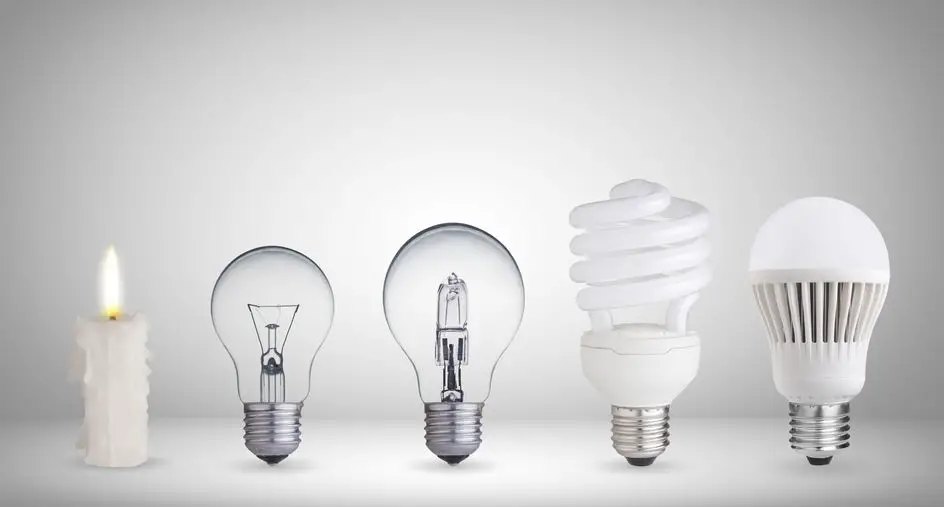
This is what a vast majority of common light bulbs look like. Using this image you should be able to determine what type of bulb it is you’re dealing with.
The main exception to this is retrofit LED bulbs. They use LED technology to produce light but are made to have glass bulbs just like incandescent bulbs. You can identify this by the yellow/orange strands that run up inside the bulb. These are meant to act like the tungsten filament in incandescent bulbs.
If you are able to identify the bulb, use this chart to get a general idea of what colour temperature you are dealing with.
| Light Bulbs | Colour Temperature |
|---|---|
| Incandescent | 2700K |
| Halogen | 3000-3400K |
| CFL | 2700-4000K |
| LED | 2200-20000K |
| Low-Pressure Sodium | 2200K |
| Mercury Vapour | 3600K |
When it comes to LEDs you need to be a bit cautious due to the technology allowing it for a wide variety of colour temperatures. However, for common household use, it’s uncommon to find LEDs outside of the 2700-4000K range.
Using A Reference Light
If nothing of the above has worked you can use a reference light to determine the colour temperature.
To describe this process you would take a bulb that you know the colour temperature of and shine it close to the bulb you are trying to assess the temperature of.
This works because we can’t see the colour temperature by eye, but you will be able to see what the difference is like.
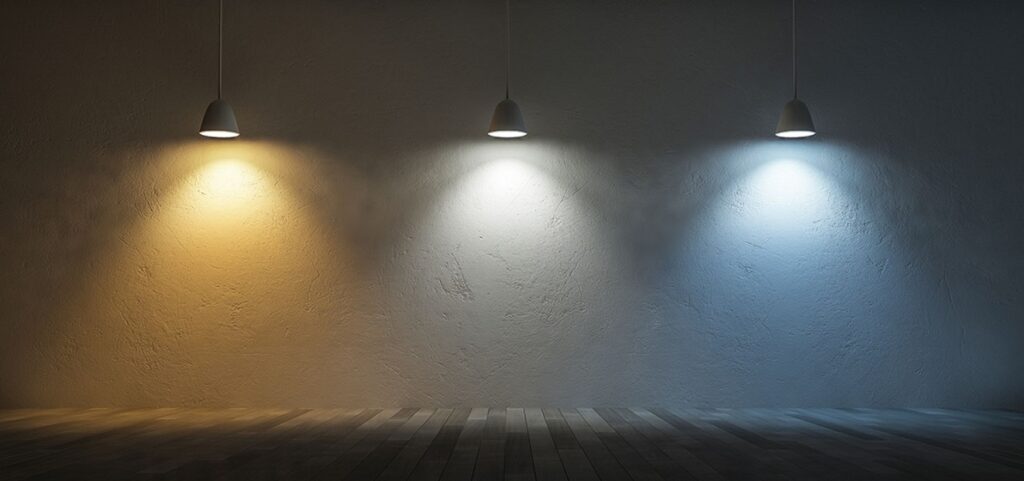
While you won’t get the actual colour temperature number this way, it is a good way to assess its general value. If you use a 2700K bulb and find that the colour temperature is slightly cooler you can assume it would be 3000K.
But if the light is a significant bit cooler you can pretty safely assume it would be around 4000K, since these are the most common colour temperatures lights are sold at.
Defining Warm and Cool Light
Warm and cool light is called “colour temperature” in the lighting industry. Colour Temperature is measured in Kelvin and essentially describes the visual temperature of any light.
The scale is based on the actual thermal temperature of light sources that follow blackbody radiation, such as incandescent bulbs and the sun.
Click here for a full explanation of Colour Temperature and Kelvin in lighting.
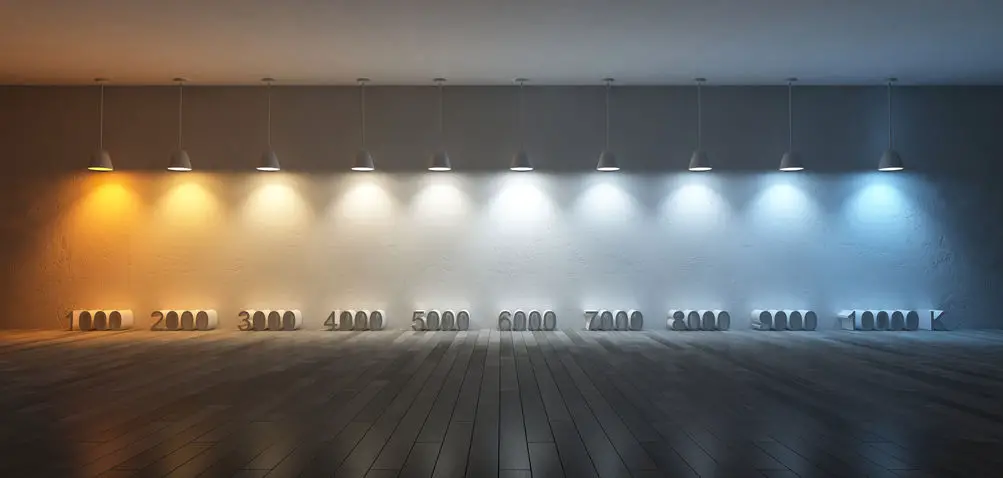
In the image above it’s clear to see that the higher you go on the Kelvin scale the cooler a light gets and the lower you go the warmer it gets.
To clearly define what values are considered warm and cool we should follow the following definitions:
- Extra Warm: 2000-2700K
- Warm White: 2700-3500K
- Cool White: 3500-6000K
- Daylight: 6000K
- Cold white: 6000K+
After making these distinctions we can clearly define warm white as anywhere between 2700-3500K and cool white as 3500-6000K.
Is Knowing Warm or Cool Lighting Important?
Now that we have discussed how to identify what colour temperature your lights are, we can discuss some reasons why knowing about colour temperatures can be important.
One reason it might be important is if you’re in the process of switching out your lights you will want one with the same colour temperature as the one you’re replacing.
This is mainly because if you switch out a warm light with a cool light it will really stick out and not blend together very well.
It can also be important to know how to differentiate between these due to the different effects they can have on us.
Warm light promotes melatonin production in humans, which is the hormone for sleep. Cool lights will suppress melatonin production and instead cause us to be more awake and active in our minds.
Therefore, for home environments, it might be more suitable with warm lighting and for places such as offices and schools cool lighting would be a better option.
Summary
To summarize, here are the most important takeaways from this.
- Cool white light is defined between the range of 3500-6000K and warm light is defined in the range of 2700-3500K
- The easiest way to find the colour temperature of your lighting is to simply look at the bulb or its packaging.
- You can try to download an app on your phone to help you determine the colour temperature of the lights.
- Warm lights are better for places where cosiness is a priority and cool lighting is better for places where concentration and activity are a priority.


